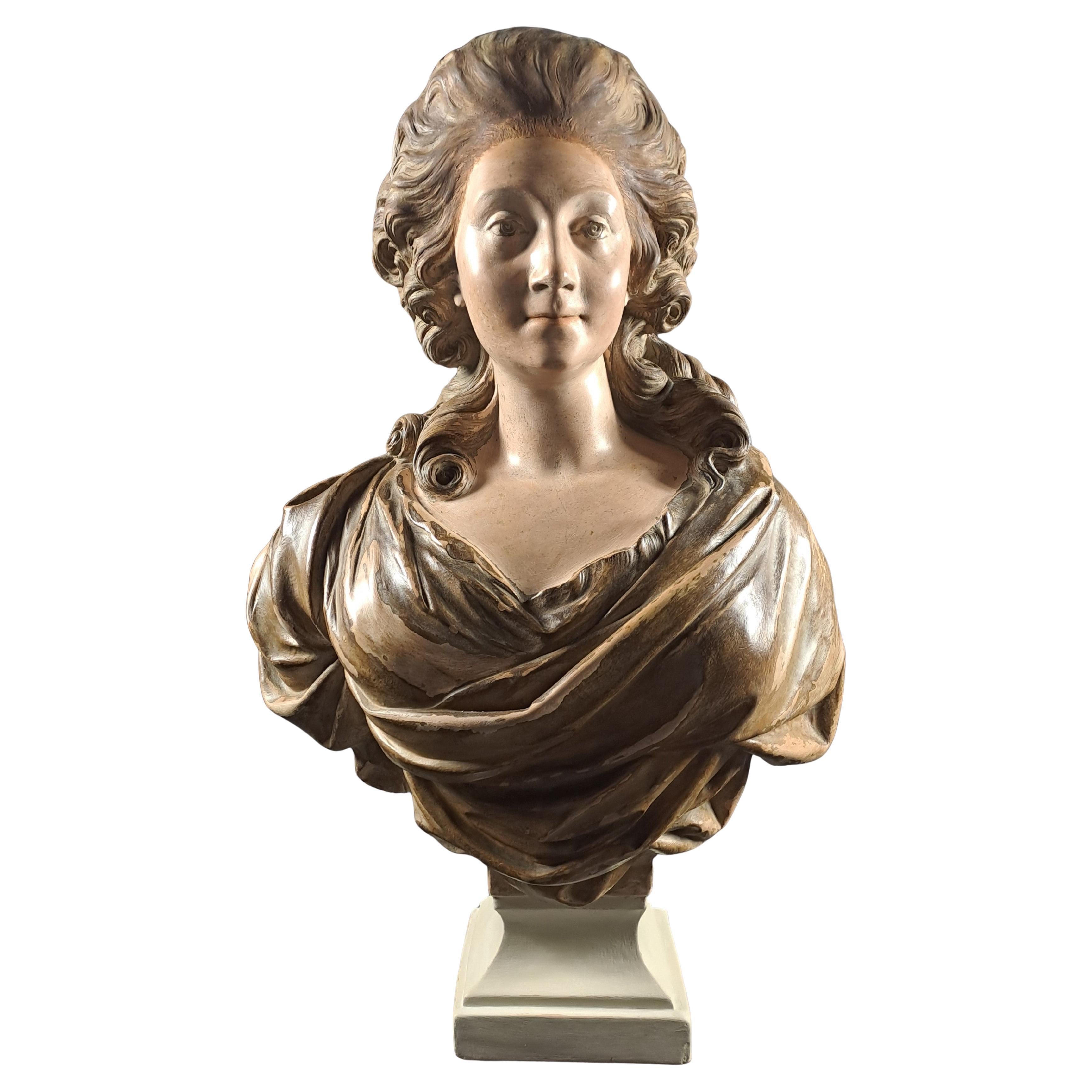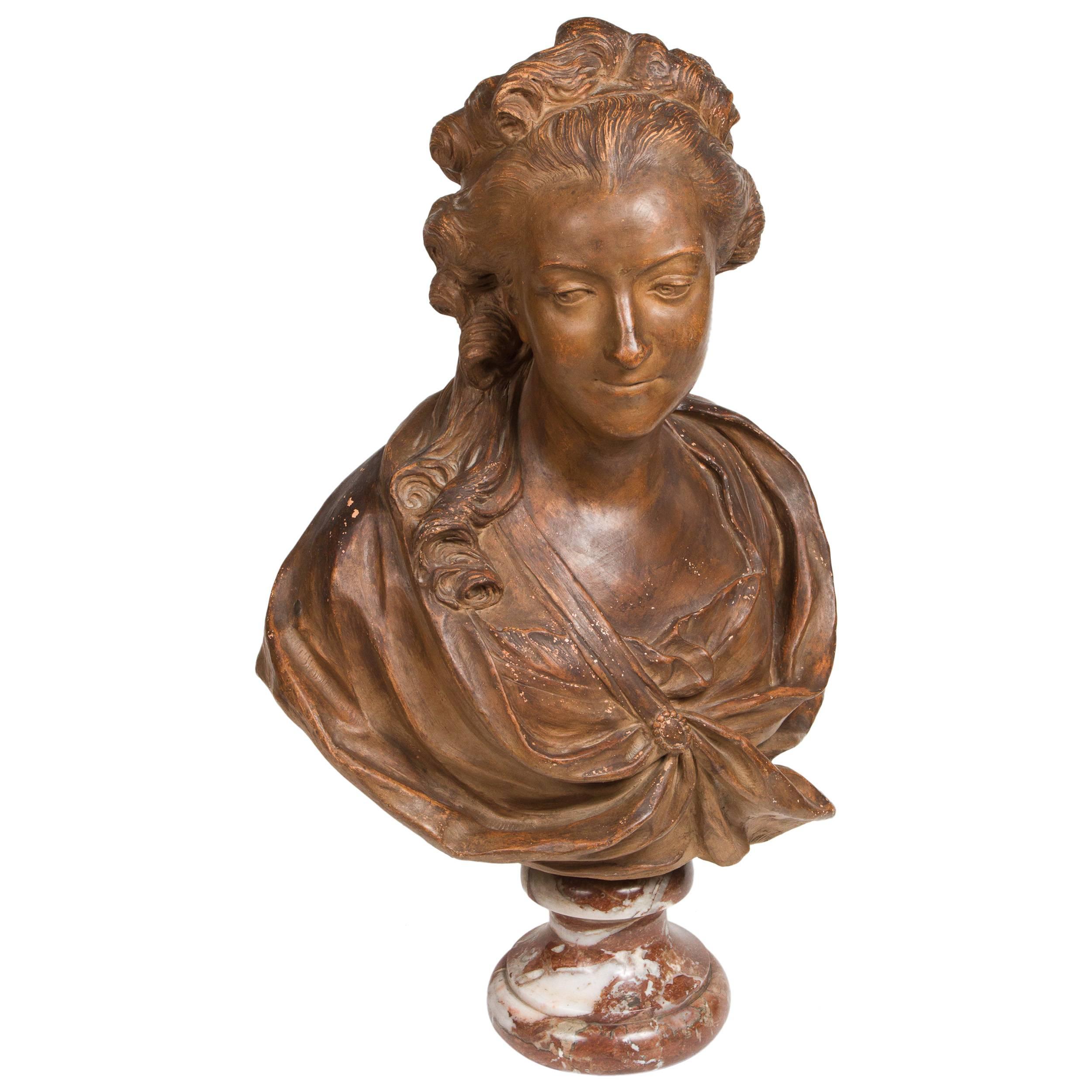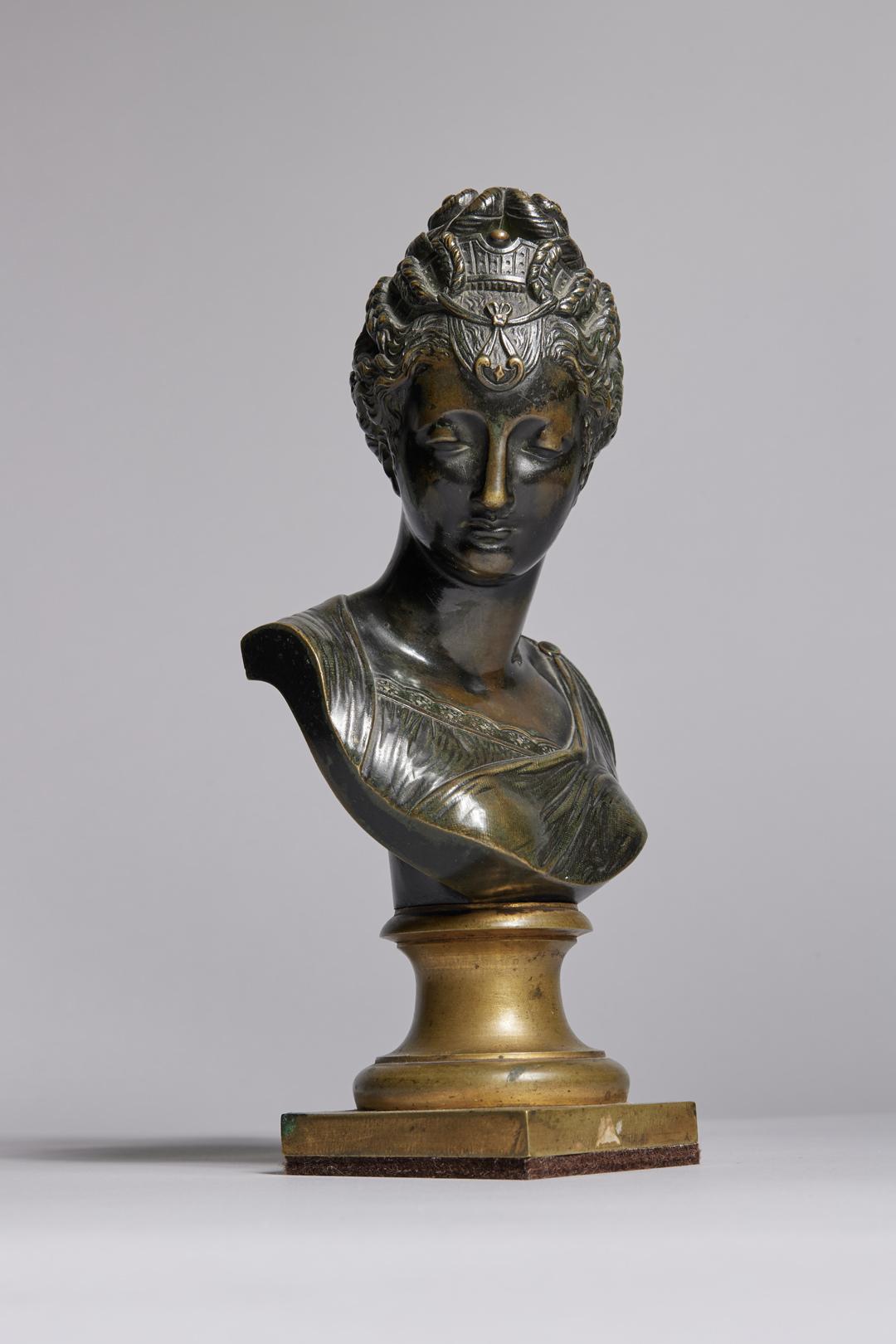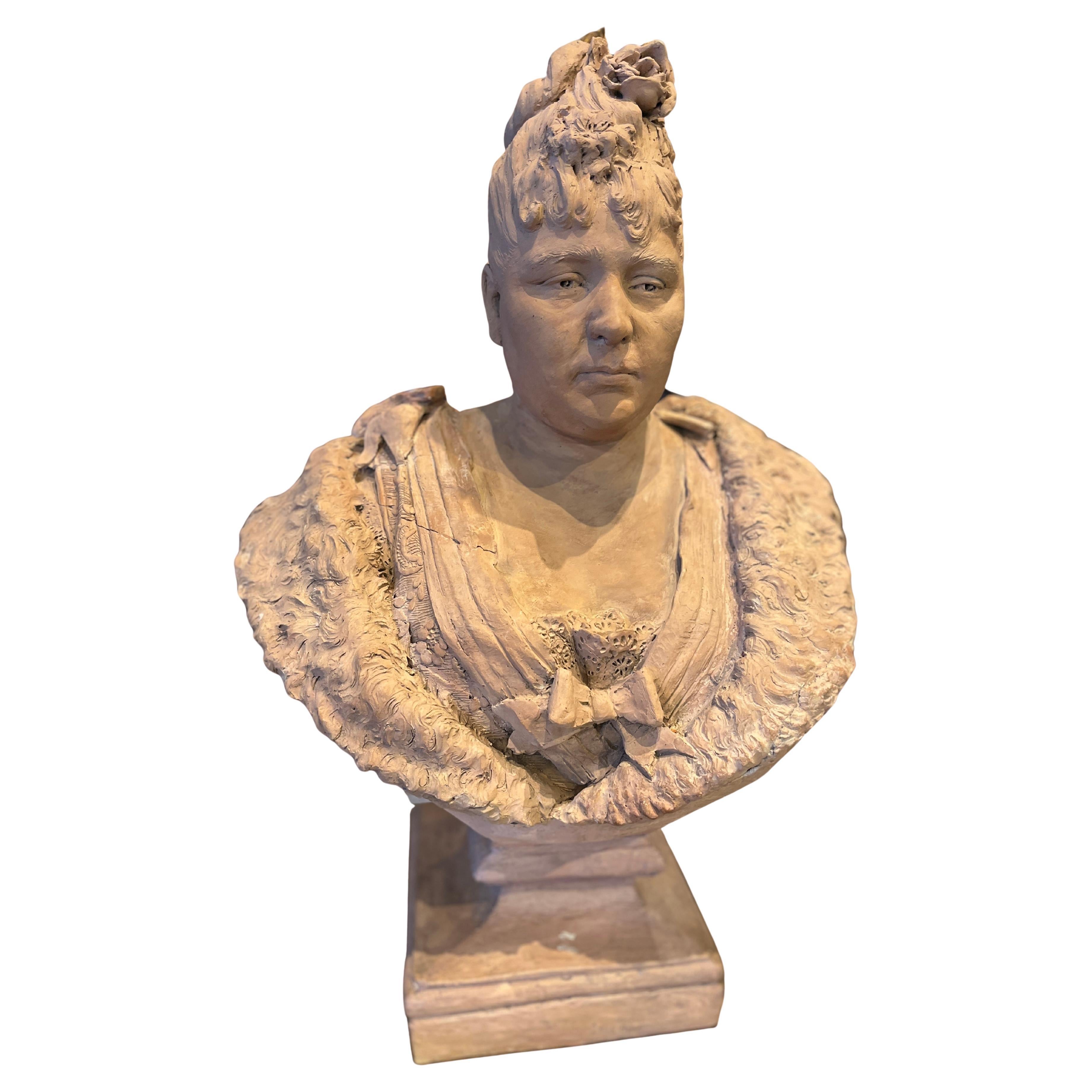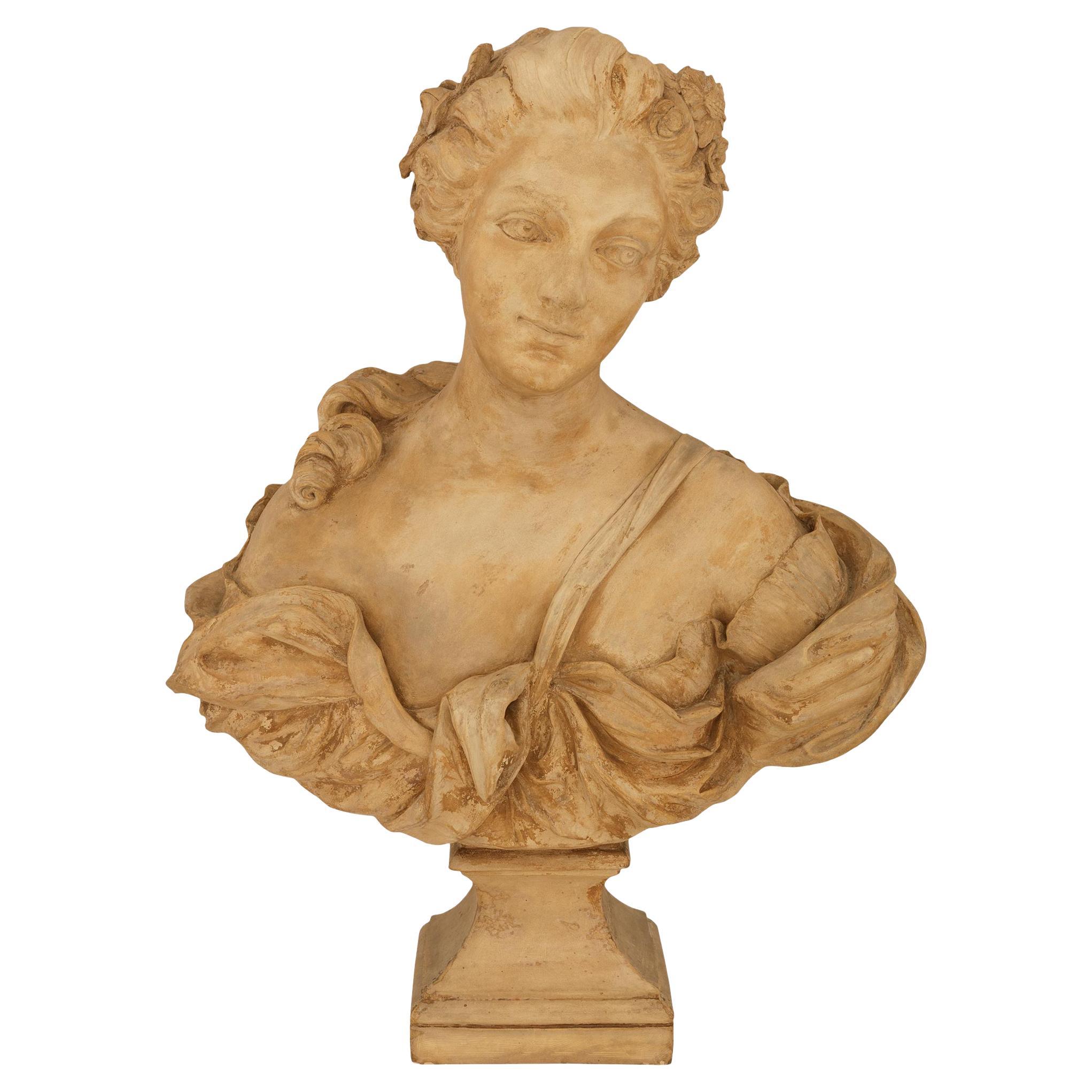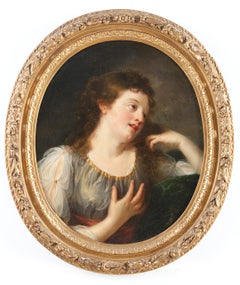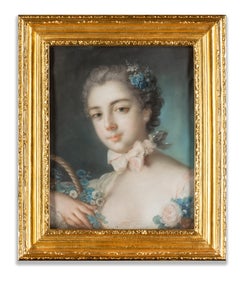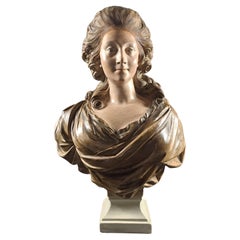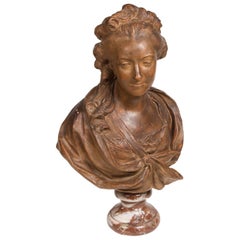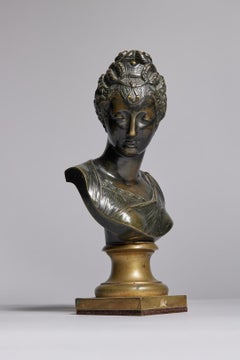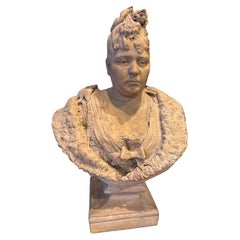Items Similar to Bust of a Lady, prob Queen Elisabeth Petrowna, Terracotta Sculpture, Baroque Art
Want more images or videos?
Request additional images or videos from the seller
1 of 21
UnknownBust of a Lady, prob Queen Elisabeth Petrowna, Terracotta Sculpture, Baroque Artcirca 1740
circa 1740
$11,301.07
£8,372.10
€9,500
CA$15,543.97
A$17,289.35
CHF 9,069.97
MX$210,969.32
NOK 113,839.55
SEK 107,279.96
DKK 72,331.75
About the Item
Bust of a Lady, thought to be Elisabeth Petrowna, also known as Elisabeth of Russia
Depicted before she was crowned
Terracotta Bust
Elizabeth Petrovna (Russian: Елизаве́та (29 December [O.S. 18 December] 1709 – 5 January 1762 [O.S. 25 December 1761]), also known as Yelisaveta or Elizaveta, reigned as the Empress of Russia from 1741 until her death in 1762. She remains one of the most popular Russian monarchs because of her decision not to execute a single person during her reign, her numerous construction projects, and her strong opposition to Prussian policies.
During her reign Elizabeth continued the policies of her father and brought about a remarkable Age of Enlightenment in Russia. Her domestic policies allowed the nobles to gain dominance in local government while shortening their terms of service to the state. She encouraged Mikhail Lomonosov's foundation of the University of Moscow, the highest-ranking Russian educational institution. Her court became one of the most splendid in all Europe, especially regarding architecture: she modernized Russia's roads, encouraged Ivan Shuvalov's foundation of the Imperial Academy of Arts, and financed grandiose baroque projects of her favourite architect, Bartolomeo Rastrelli, particularly in Peterhof Palace. The Winter Palace and the Smolny Cathedral in Saint Petersburg are among the chief monuments of her reign.
- Creation Year:circa 1740
- Dimensions:Height: 26.38 in (67 cm)Width: 20.87 in (53 cm)
- Medium:
- Movement & Style:
- Period:
- Condition:
- Gallery Location:Greven, DE
- Reference Number:1stDibs: LU155028128972
About the Seller
4.8
Gold Seller
Premium sellers maintaining a 4.3+ rating and 24-hour response times
Established in 2011
1stDibs seller since 2021
30 sales on 1stDibs
Typical response time: 1 hour
- ShippingRetrieving quote...Shipping from: Greven, Germany
- Return Policy
Authenticity Guarantee
In the unlikely event there’s an issue with an item’s authenticity, contact us within 1 year for a full refund. DetailsMoney-Back Guarantee
If your item is not as described, is damaged in transit, or does not arrive, contact us within 7 days for a full refund. Details24-Hour Cancellation
You have a 24-hour grace period in which to reconsider your purchase, with no questions asked.Vetted Professional Sellers
Our world-class sellers must adhere to strict standards for service and quality, maintaining the integrity of our listings.Price-Match Guarantee
If you find that a seller listed the same item for a lower price elsewhere, we’ll match it.Trusted Global Delivery
Our best-in-class carrier network provides specialized shipping options worldwide, including custom delivery.More From This Seller
View AllBust of a Lady, Madame Comtesse Du Barry, Terracotta Bust, French Antique School
Located in Greven, DE
A powerful presentation piece, this stunning bust of Jean Bécu - Comtesse du Barry is both beautiful and tragic. Executed in terracotta that has been...
Category
19th Century Rococo Figurative Sculptures
Materials
Terracotta
$4,282 Sale Price
20% Off
French School, Portrait of a Young Lady, Actress, Louis XIV sculpted frame, 1700
Located in Greven, DE
French School,
Portrait of a Young Lady, perhaps an actress
Oval
Louis XIV sculpted and gilded frame
French Art, Roccoco Art
The oval portrait of a young woman measures 61 by 50,5 cm canvas sight size and its 18th century oak carved and gilded frame...
Category
18th Century Rococo Portrait Paintings
Materials
Canvas, Oil
French School, Portrait of a Lady, Actress, Young Woman, French , Rococo, Oval
Located in Greven, DE
French Art
Rococo
Portrait of a Woman, Young Lady, perhaps an actress
Category
18th Century Rococo Figurative Paintings
Materials
Canvas
Rococo Portait, French Rococo, Marie Baudouin, Daughter of Francois Boucher
By François Boucher
Located in Greven, DE
Portrait of the daughter of Francois Boucher, Marie-Emilie Baudouin, holding a basket of flowers. Pastel on Parchment. The work is related to an oval portrait painting...
Category
18th Century Rococo Portrait Drawings and Watercolors
Materials
Pastel
$8,550 Sale Price
60% Off
Portrait Old Master, Joseph Vivien, Mme Silvestre, French Rococo, Pastel
By Joseph Vivien
Located in Greven, DE
The portrait shows Mme Silvestre.
Born in Paris, Silvestre was the daughter of Charles-Antoine Hérault and his wife Marie-Geneviève, who were her first teachers. In 1706 she married the painter Louis de Silvestre, moving with him in 1716 to Dresden. The couple's daughter Marie-Maximilienne became a pastellist. Silvestre died in Dresden, the year before her husband retired and returned to Paris. Her surviving pastels show the influence of Rosalba Carriera...
Category
18th Century Rococo Portrait Paintings
Materials
Gouache, Oil Pastel
French Art, Rococo Portrait, Oval, Pastel, Portrait of a Lady, Circle of Vivien
Located in Greven, DE
French School, Portrait of a Lady, Rococo, 18th Century, Fine drawing in Pastel/ Oil Pastel on Paper in the style of Vivien. The Lady might be a woman from Marie Antoinette's Court. It is part of a Pendant (see the other listing with the portrait of Queen Marie Antoinette...
Category
18th Century Rococo Portrait Drawings and Watercolors
Materials
Paper, Oil Pastel, Gouache
$6,650 Sale Price
72% Off
You May Also Like
Large Terracotta Bust - Lady Of Quality In The 18th Century Style
Located in BARSAC, FR
Large terracotta bust representing a lady of quality in the taste of the 18th century.
Two-tone patina, white lacquered base.
French work from the end of the 19th century.
...
Category
Antique Late 19th Century French Louis XV Busts
Materials
Terracotta
Important Terracotta Bust of Madame du Barry
Located in Montreal, QC
Important terracotta bust of Madame du Barry resting on a Rouge de Languedoc marble base, beautiful patination, inscribed on back: "Feceit 1777."
Ma...
Category
Antique 1880s French Louis XVI Busts
Materials
Terracotta
Bust of Diane de Poitiers, Bronze sculpture of French Noblewoman
Located in Beachwood, OH
After Jean Goujon (French, 1510-1568)
Bust of Diane de Poitiers
Bronze with gilt socle base
9 x 3.75 x 2.75 inches
Provenance: Removed from a private residence at the Pierre Hotel
Di...
Category
19th Century Figurative Sculptures
Materials
Bronze
19th Century French Terracotta Bust of a Lady
Located in Scottsdale, AZ
19th Century French Terracotta Bust of a Lady. Beautiful piece purchased in France. Age appropriate wear, see detailed photos or message us with questions.
Category
Antique 19th Century French Victorian Busts
Materials
Terracotta
A French 19th century Terra Cotta bust of Madame de Pompadour
Located in West Palm Beach, FL
An elegant and most decorative French 19th century Terra Cotta bust of Madame de Pompadour. This charming bust is raised on a square tapered socle support with mottled designs and a ...
Category
Antique 19th Century French Busts
Materials
Terracotta
19th Century French Terracotta Bust
Located in Brighton, Sussex
A good quality French 19th patinated terracotta bust of a classical lady, mounted on a Rouge marble sockel.
Category
Antique 19th Century French Baroque Busts
Materials
Terracotta
More Ways To Browse
Antique European Sculpture
Lady Sculpture
Antique Saints Sculptures
Terracotta Saint
Russia Winter Palace
18th Century Terracotta Bust
Russian Lomonosov
Queen Elizabeth Bust
Glen Campbell
Haitian Jungle Painting
Harvey Dinnerstein
J R Willis
Jacobo Borges
John Copeland
John Frederick Herring Jr
John Henry Twachtman
Jr Louvre
Juan Manuel Sanchez Painting
